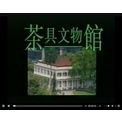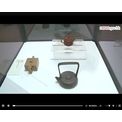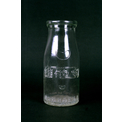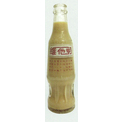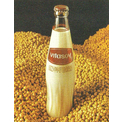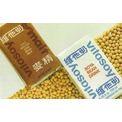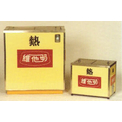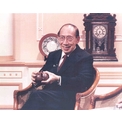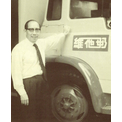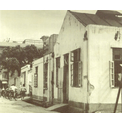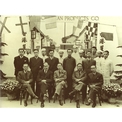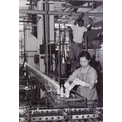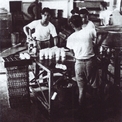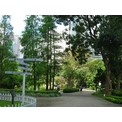-
History & Society
- Education in Pre-war Hong Kong
- History of Taikoo Sugar Refinery
- Hong Kong Products Exhibition
- Local Festivals Around the Year
- Post-war Industries
- Pre-war Industry
- The Hong Kong Jockey Club Archives
- Tin Hau Festival
- Memories We Share: Hong Kong in the 1960s and 1970s
- History in Miniature: The 150th Anniversary of Stamp Issuance in Hong Kong
- A Partnership with the People: KAAA and Post-war Agricultural Hong Kong
- The Oral Legacies (I) - Intangible Cultural Heritage of Hong Kong
- Hong Kong Currency
- Hong Kong, Benevolent City: Tung Wah and the Growth of Chinese Communities
- The Oral Legacies Series II: the Representative List of the Intangible Cultural Heritage of Hong Kong
- Braving the Storm: Hong Kong under Japanese Occupation
- A Century of Fashion: Hong Kong Cheongsam Story
Geography & EnvironmentArt & Culture- Calendar Posters of Kwan Wai-nung
- Festival of Hong Kong
- Ho Sau: Poetic Photography of Daily Life
- Hong Kong Cemetery
- Sketches by Kong Kai-ming
- The Culture of Bamboo Scaffolding
- The Legend of Silk and Wood: A Hong Kong Qin Story
- Journeys of Leung Ping Kwan
- From Soya Bean Milk To Pu'er Tea
- Applauding Hong Kong Pop Legend: Roman Tam
- 他 FASHION 傳奇 EDDIE LAU 她 IMAGE 百變 劉培基
- A Eulogy of Hong Kong Landscape in Painting: The Art of Huang Bore
- Imprint of the Heart: Artistic Journey of Huang Xinbo
- Porcelain and Painting
- A Voice for the Ages, a Master of his Art – A Tribute to Lam Kar Sing
- Memories of Renowned Lyricist: Richard Lam Chun Keung's Manuscripts
- Seal Carving in Lingnan
- Literary Giant - Jin Yong and Louis Cha
Communication & Media- Hong Kong Historical Postcards
- Shaw Brothers’ Movies
- Transcending Space and Time – Early Cinematic Experience of Hong Kong
- Remembrance of the Avant-Garde: Archival Camera Collection
- Down Memory Lane: Movie Theatres of the Olden Days
- 90 Years of Public Service Broadcasting in Hong Kong
- Multifarious Arrays of Weaponry in Hong Kong Cinema
-
History & SocietyGeography & EnvironmentArt & Culture
-
View Oral History RecordsFeatured StoriesAbout Hong Kong Voices
-
Hong Kong Memory
- Collection
- All Items
- From Soya Bean Milk to Pu´er Tea
Recently VisitedFrom Soya Bean Milk to Pu´er Tea
This video briefly introduces the evolution of tea production and preparation processes, distinctive tea drinking customs and characteristic of tea making methods and utensils to describe that tea links to history and farming and its close ties with life, with the art and with culture. This video introduces the history of Flagstaff House as well as the establishment and development of the Museum of Tea Ware. K.S. Lo also told about the story of his interest in tea ware. More than 30 years ago, Vitasoy Group founder and then urban councillor K.S. Lo suggested conserving Flagstaff House - the former headquarters of the Commander of the British Forces - by turning it into the Museum of Tea Ware. K.S. Lo also donated 600 tea sets collected from China and overseas to the museum. To celebrate the 30th anniversary of Asia's first tea ware museum, a year-long exhibition "From Soya Bean Milk to Puer Tea" was held in 2014 to showcase more than 80 tea sets and chart K.S. Lo's story as a tea connoisseur and collector. Launched as a substitute for milk, Vitasoy was initially sold in wide-rimmed milk bottles. Malted Vitasoy soymilk launched as a new flavour of soymilk in Hong Kong market in 1962.Recent Vitasoy bottle. Paper pack Vitasoy and Malted Vitasoy were launched in 1975, the first paper pack beverages in Hong Kong. In 1957, Hot Vitasoy and the accompaniment of customised milk warming cabinets were first introduced in Hong Kong. Customers immediately embraced this seasonal offering and hot Vitasoy continues to be in high demand today. Vitasoy Group founder K.S. Lo, who was then an Urban Councillor, advocated the establishment of Asia's first tea ware museum and donated his collection to the Flagstaff House Museum of Tea Ware. K.S. Lo attached great importance to marketing efforts. He had the market visit with one salesman every week to understand the market situation.The Hong Kong Soya Bean Products Company workshop at the ICI warehouse on Great George Street, Causeway Bay, in the 1940s. Company shareholders and staff pictured at the Hong Kong Soya Bean Products Company grand opening. Five shareholders in the front row (left to right): Chan Chun Lam, Shiu Wai Ming, K.S. Lo, Chan Nam Cheong and Kwan Yim Chor. The 1950s Vitasoy production line. The Company resumed production after the end of World War II, and Vitasoy was sold through retailers, replacing door-to-door delivery. Hong Kong Park, covers an area of 8 hectares, is officially opened in May 1991. The project was undertaken at a cost of $398 million. The present site of the Park was originally a garrison named Victoria Barracks. In 1979, the Government decided that the portion of the garrison near the foot of the hill should be used for commercial development and construction of government buildings while the mid-level portion be jointly developed by the former Urban Council and the former Royal Hong Kong Jockey Club for the provision of a park.Copyright © 2012 Hong Kong Memory. All rights reserved.
| Set Name |







